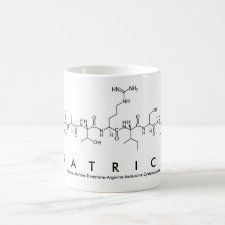
Authors: Van Grinsven B, Eersels K, Erkens-Hulshof S, DiliŽn H, Nurekeyeva K, Cornelis P, Klein D, Crijns F, Tuijthof G, Wagner P, Redeker ES, Cleij TJ
Article Title: SIP-Based Thermal Detection Platform for the Direct Detection of Bacteria Obtained from a Contaminated Surface.
Publication date: 2018
Journal: physica status solidi (a)
Volume: 215
Issue: (15)
Page numbers: ArticleNo1700777.
DOI: 10.1002/pssa.201700777
Abstract: Surface detection of bacteria has been proven difficult and time-consuming. Different recovery techniques yield varying numbers of bacteria. Subsequently, bacterial culturing, used for identification of these bacteria, will take several hours. In this article, the potential of a newly developed thermal biomimetic sensor for the detection of bacteria on surfaces is described. Previously this thermal biomimetic sensor has proven to be able to detect and quantify different bacteria in various liquid media such as buffer and spiked urine samples. In this article, laboratory surfaces are contaminated with increasing concentrations of Escherichia coli. Bacteria are recovered from the surfaces using commercially available swab rinse kits (SRK). A calibration curve is created by coating chips with surface-imprinted polymers (SIPs), serving as synthetic bacteria receptors, and exposing them to increasing concentrations of E. coli. Next, concentrations of E. coli in the SRK buffer are measured and quantified. The results show that it is possible to detect E. coli recovered from surfaces. Although quantification has been proven difficult as the dynamic range of the sensor is relatively narrow and the bacterial load obtained by using SRK is low, the sensor is able to give an indication about the concentration present on the surface. The results in this article illustrate that the thermal biomimetic sensor is a fast, low-cost, and label-free device useful in surface detection of E. coli, and seems a promising tool for future on-site bacterial detection
Template and target information: bacteria, Escherichia coli, E. coli
Author keywords: bacterial culture, bacterial detection, heat-transfer methods, swab rinse kits, thermal interface resistance



Join the Society for Molecular Imprinting

New items RSS feed
Sign-up for e-mail updates:
Choose between receiving an occasional newsletter or more frequent e-mail alerts.
Click here to go to the sign-up page.
Is your name elemental or peptidic? Enter your name and find out by clicking either of the buttons below!
Other products you may like:
 MIPdatabase
MIPdatabase









